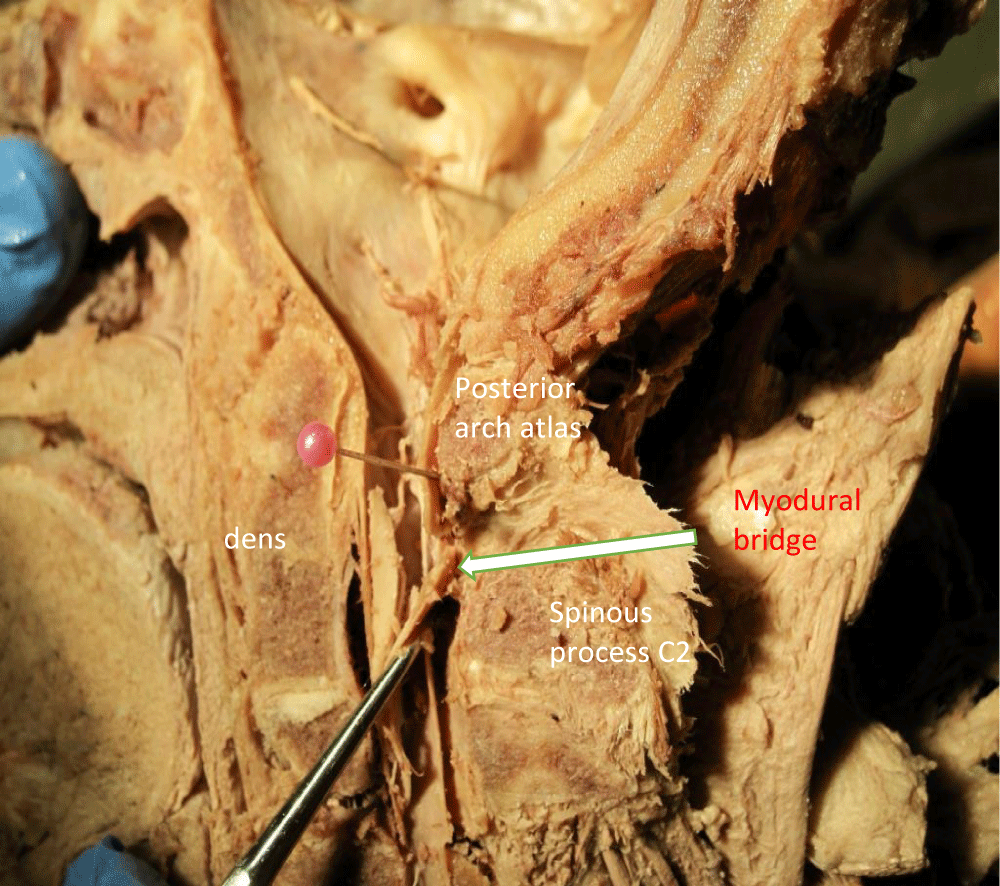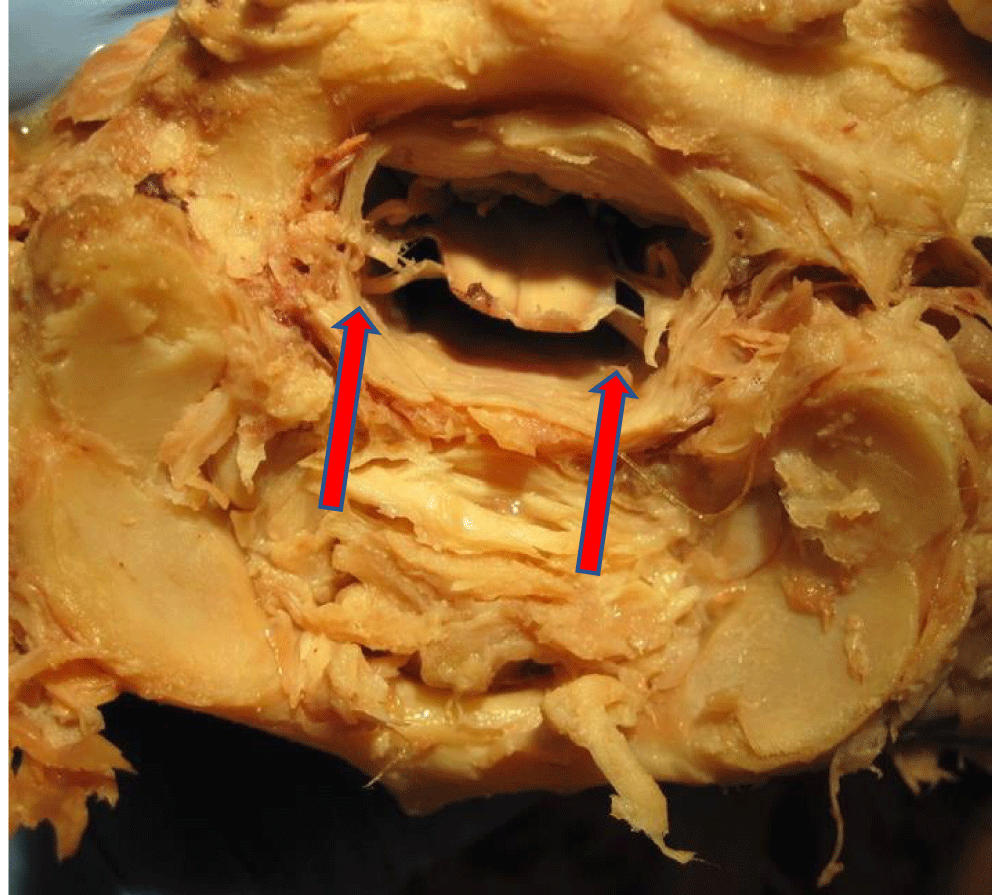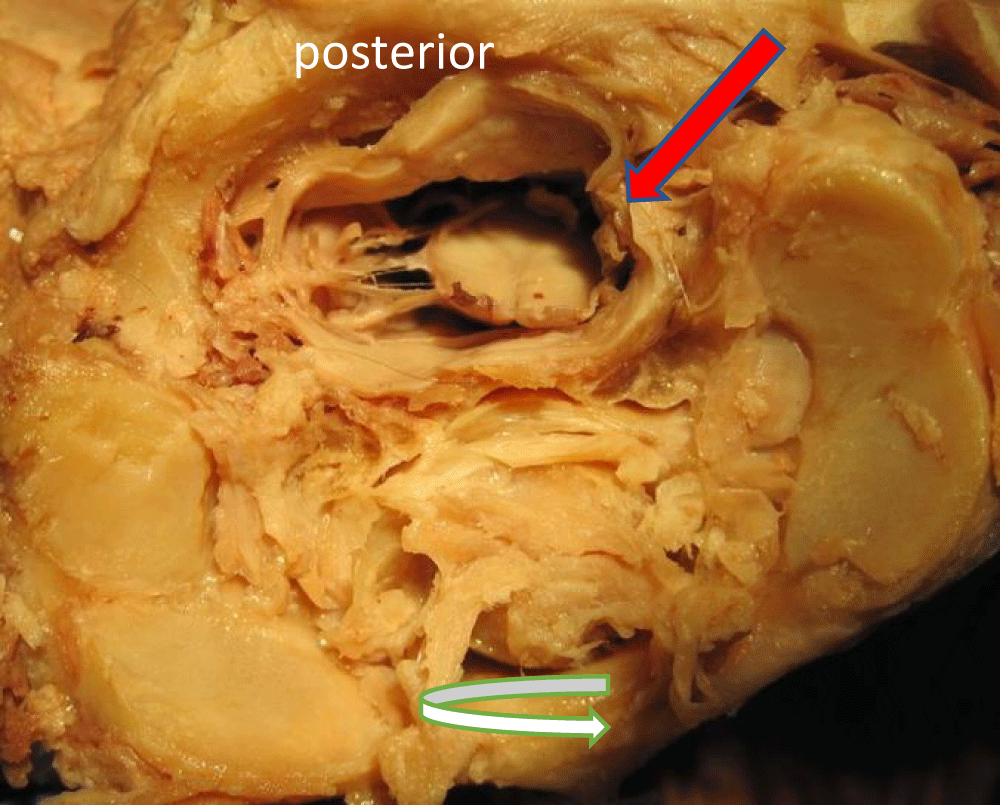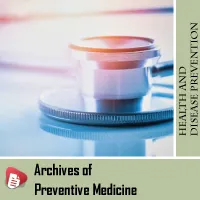Archives of Preventive Medicine
Upper cervical spine syndrome: A new perspective
Rob Sillevis* and Anne Weller Hansen
Cite this as
Sillevis R, Hansen AW (2024) Upper cervical spine syndrome: A new perspective. Arch Prev Med 9(1): 018-021. DOI: 10.17352/apm.000036Copyright
© 2024 Sillevis R, et al. This is an open-access article distributed under the terms of the Creative Commons Attribution License, which permits unrestricted use, distribution, and reproduction in any medium, provided the original author and source are credited.Headaches are widespread in Western Society; they affect approximately 50% of the adult population in the United States. Headaches can present with a variety of clinical and regional symptoms. Although a headache disorder classification system exists, clinical experience has identified various overlapping causes for headaches. It remains clinically challenging to identify the exact etiology causing headaches. For example, the underlying mechanism of cervicogenic headaches remains elusive, but the upper cervical spine plays a key role. Abnormal upper cervical movement patterns, in combination with muscular dysfunctions, are a possible contributing factor to headaches. The upper vertebral spinal nerves C0-C3 have been correlated with cervicogenic headaches. It has been established that biomechanical dysfunction of the upper cervical spine can contribute to neck pain. The atlas plays a key role in the biomechanical dysfunction in the upper cervical spine. Previously, it has been identified that the relative position of the atlas to the axis correlates with headaches.
Additionally, it has been demonstrated that an extended contraction of the homolateral obliquus capitis inferior muscles can result in positional default rotation of the atlas. As managing headaches remains multimodal and challenging, there is enough evidence to support the inclusion of the upper cervical spine to normalize joint position, joint mobility, muscle tonicity, and upright positioning. When recognizing the “upper cervical syndrome” and addressing the functioning of the atlas, clinical outcomes will improve for those treating patients with headaches.
Introduction
Headaches are prevalent in Western Society; they affect approximately 50% of the adult population in the United States. Headaches can cause various clinical symptoms, such as nausea, pain, light and sound sensitivity, and increased muscle tension. Headaches often result in reduced individual productivity, causing a direct economic burden. The International Headache Society has provided clinicians with a classification system, which may help identify the type of headache disorder that could be present [1]. Typically, the classification is based on the location of the primary cause of the headache. This location is either inside or outside the head. This dualism of classifying headache disorders may result in a one-sided treatment intervention. Individuals suffering from headaches are typically managed by various providers, such as general practitioners, neurologists, interventional pain specialists, chiropractors, and physical therapists. These providers base their intervention on the classification of the headache at hand.
Despite the headache disorder classification system, clinical experience has revealed that patients commonly present with various overlapping causes for their headache presentation. A multidimensional and multidisciplinary approach to managing headaches is needed; however, this should be based on current evidence identifying causalgia and managing the patient with that in mind instead of simple classification. When looking closer at headaches caused by a source outside the head, the cervicogenic headache type is most common. This type of headache is typically manageable without medicinal regimens or interventional pain management. The International Headache Society defined cervicogenic headaches as a “headache caused by a disorder of the cervical spine and its component bony, disc and soft tissue elements, usually but not invariably accompanied by neck pain” by the International Headache Society [1]. The prevalence of cervicogenic headaches is about 15% of all headaches. About 4% of the adult population is experiencing the cervicogenic headache at any given time [2-4].
The exact underlying mechanism of cervicogenic headaches remains elusive. However, the upper cervical spine plays a key role [5]. Therefore, the current pharmacological and non-pharmacological intervention management strategies and their long-term effects must be called into question. Over the last ten years, societal norms have changed. Today, more and more adults are using computers for prolonged periods in the workforce or while working from home. Being in an unsupported upright position can contribute to an increase in pain in the neck. It takes only sixty minutes of poor posture behind a computer screen to develop neck pain [6]. Upper cervical posture is an essential factor influencing the functioning of the upper cervical spine and should be related to any primary or secondary headache presentation. Clinically, providers can quickly evaluate upright posture using the craniovertebral angle, especially without a later cervical radiograph [7,8].
The upper cervical spine is consistently identified as a causative factor for cervicogenic headaches. Several structures could play a role. There are the (non-pathological) anatomical structures of both the vertebra and concurrent disc that are not typically identified as contributing factors. The upper vertebral spinal nerves C0-C3 have been correlated with cervicogenic headaches. Anatomical dissections displayed a direct relationship between the trigeminal nerve and spinal nerves C1 through C3 [9,10]. In the trigeminocervical ganglion, the dorsal horns of the upper cervical spine synapses within the trigeminocervical nuclei. This pathway would allow nociceptive signals from the cervical spine to converge onto the forehead and face. Interventional pain management with a focus on the C1-C3 nerve roots in the vertebral foramen has shown short-term benefits in both reducing neck pain and headache intensity [11]. It is clear that biomechanical dysfunction of the upper cervical spine can contribute to neck pain. Abnormal upper cervical movement patterns, in combination with muscular dysfunctions, have been identified as a possible contributing factor for cervicogenic headaches [5].
More recently, direct collagenous tissue connections between the outside layer of the dura and the nuchal ligament have been demonstrated [12]. Similar fascial myodural connections between the rectus capitis posterior minor, rectus capitis posterior major, and the obliquus capitis inferior with the dura exist (Figure 1) [13,14]. These myodural bridges imply that the cervical bony position and movement of the upper cervical spine can result in neuro-tension. Positive neural tension testing is often found when treating patients with cervicogenic headaches [15-17]. Functional movement of the upper cervical spine primarily depends on the position and movement of the atlas. About fifty percent of the rotational movement of the neck is carried out in the atlantoaxial joint [18]. The position of the atlas relative to the axis correlates with headaches [18-20]. The suboccipital muscles, especially contraction of the obliquus capitis inferior muscles, will result in homolateral rotation of the atlas relative to the axis.
It has been demonstrated that an extended contraction of the homolateral obliquus capitis inferior muscles can result in the rotation of the atlas in a left rotational positional default position of the atlas [19,20]. The simulated effect of atlas movement on the spinal cord can be seen in dissection Figures 2-4. Figure 2 is representative of the neutral cervical position. Figures 3 and 4 demonstrate the rotation of the atlas performed manually in the transverse plane. The concept of neural tension with atlas movement can be noted as a significant shift of the spinal cord within the dural sac toward the side of rotation. These dissection figures support the notion that muscle contractions and or muscle hypertrophy of the suboccipital muscles could result in dural tensioning. However, dural tension in the cervical spine might not contribute much to nociception. The cranial dura certainly does have a rich innervation of pain-sensitive nerve fibers [21]. It has been identified that the cranial dura contributes to the development of headaches when sensitization is present [22]. This concurs with the fact that subjects with headaches typically report a worsening I intensity with different cervical positions such as forward bend or looking up.
In conclusion, there are multiple reasons why an individual could develop headaches. It appears that no matter what headache classification is used, most individuals in Western society have poor positional awareness and poor upright posture, combined with abnormal suboccipital muscle tonicity and poor movement patterns in the upper cervical spine. As managing headaches remains multimodal and challenging, there is enough evidence to support the inclusion of the upper cervical spine to normalize joint position and mobility, muscle tonicity, and upright positioning.
- Headache Classification Committee of the International Headache Society (IHS) The International Classification of Headache Disorders, 3rd edition. Cephalalgia. 2018 Jan;38(1):1-211. doi: 10.1177/0333102417738202. PMID: 29368949.
- Nilsson N. The prevalence of cervicogenic headache in a random population sample of 20-59 year olds. Spine (Phila Pa 1976). 1995 Sep 1;20(17):1884-8. doi: 10.1097/00007632-199509000-00008. PMID: 8560336.
- Sjaastad O, Bakketeig L. Tension-type headache: comparison with migraine without aura and cervicogenic headache. The Vågå study of headache epidemiology. Funct Neurol. 2008 Apr-Jun;23(2):71-6. PMID: 18671906.
- Sjaastad O, Bakketeig LS. Prevalence of cervicogenic headache: Vågå study of headache epidemiology. Acta Neurol Scand. 2008 Mar;117(3):173-80. doi: 10.1111/j.1600-0404.2007.00962.x. Epub 2007 Nov 20. PMID: 18031563.
- Verma S, Tripathi M, Chandra PS. Cervicogenic Headache: Current Perspectives. Neurol India. 2021 Mar-Apr;69(Supplement):S194-S198. doi: 10.4103/0028-3886.315992. PMID: 34003165.
- Cheragh ZA, Degens H, Sakinepoor A. Effect of a slump posture on pain, proprioception, and electrical activity of the muscles in office workers with chronic non-specific neck pain. A retrospective study. J Bodyw Mov Ther. 2024 Apr;38:100-105. doi: 10.1016/j.jbmt.2023.12.006. Epub 2024 Jan 4. PMID: 38763548.
- Oakley PA, Moustafa IM, Haas JW, Betz JW, Harrison DE. Two Methods of Forward Head Posture Assessment: Radiography vs. Posture and Their Clinical Comparison. J Clin Med. 2024 Apr 8;13(7):2149. doi: 10.3390/jcm13072149. PMID: 38610914; PMCID: PMC11012400.
- Alshahrani A, Ghulam HSH, Alqhtani RS, Al Sharyah YHH, Ahmed H, Aafreen A, Khan AR, Khan A, Ahmad A. Cervical Health Parameters in Car Drivers: Assessing the Influence of Driving on Neck Pain, Mobility, Proprioception and Craniovertebral Angle - A Cross-Sectional Study. J Multidiscip Healthc. 2024 May 2;17:2013-2020. doi: 10.2147/JMDH.S458364. PMID: 38716370; PMCID: PMC11074232.
- Hall T, Briffa K, Hopper D. Clinical evaluation of cervicogenic headache: a clinical perspective. J Man Manip Ther. 2008;16(2):73-80. doi: 10.1179/106698108790818422. PMID: 19119390; PMCID: PMC2565113.
- Biondi DM. Cervicogenic headache: diagnostic evaluation and treatment strategies. Curr Pain Headache Rep. 2001 Aug;5(4):361-8. doi: 10.1007/s11916-001-0026-x. PMID: 11403740.
- Chen YY, Chai HM, Wang CL, Shau YW, Wang SF. Asymmetric Thickness of Oblique Capitis Inferior and Cervical Kinesthesia in Patients With Unilateral Cervicogenic Headache. J Manipulative Physiol Ther. 2018 Oct;41(8):680-690. doi: 10.1016/j.jmpt.2018.02.006. Epub 2018 Dec 27. PMID: 30594332.
- Sillevis R, Hogg R. Anatomy and clinical relevance of sub occipital soft tissue connections with the dura mater in the upper cervical spine. PeerJ. 2020 Aug 10;8:e9716. doi: 10.7717/peerj.9716. PMID: 32864219; PMCID: PMC7425638.
- Scali F, Marsili ES, Pontell ME. Anatomical connection between the rectus capitis posterior major and the dura mater. Spine (Phila Pa 1976). 2011 Dec 1;36(25):E1612-4. doi: 10.1097/BRS.0b013e31821129df. Erratum in: Spine (Phila Pa 1976). 2012 Mar 15;37(6):530. PMID: 21278628.
- Pontell ME, Scali F, Marshall E, Enix D. The obliquus capitis inferior myodural bridge. Clin Anat. 2013 May;26(4):450-4. doi: 10.1002/ca.22134. Epub 2012 Jul 26. PMID: 22836789.
- Szikszay TM, Luedtke K, Harry von P. Increased mechanosensivity of the greater occipital nerve in subjects with side-dominant head and neck pain - a diagnostic case-control study. J Man Manip Ther. 2018 Aug;26(4):237-248. doi: 10.1080/10669817.2018.1480912. Epub 2018 Jul 31. PMID: 30083047; PMCID: PMC6071269.
- Caamaño-Barrios LH, Galán-Del-Río F, Fernández-de-Las-Peñas C, Cleland JA, Plaza-Manzano G, Ortega-Santiago R. Evaluation of neurodynamic responses in women with frequent episodic tension type headache. Musculoskelet Sci Pract. 2019 Dec;44:102063. doi: 10.1016/j.msksp.2019.102063. Epub 2019 Sep 17. PMID: 31542684.
- von Piekartz HJ, Schouten S, Aufdemkampe G. Neurodynamic responses in children with migraine or cervicogenic headache versus a control group. A comparative study. Man Ther. 2007 May;12(2):153-60. doi: 10.1016/j.math.2006.06.004. Epub 2006 Aug 8. PMID: 16899387.
- Wu SK, Kuo LC, Lan HC, Tsai SW, Su FC. Segmental percentage contributions of cervical spine during different motion ranges of flexion and extension. J Spinal Disord Tech. 2010 Jun;23(4):278-84. doi: 10.1097/BSD.0b013e3181a98d26. PMID: 20068468.
- Sillevis R, Wyss K. The management of a positional default of atlas in a patient with cervicogenic headache: A case report. Clin Case Rep Rev. Nov 2015;1(10):218-223.
- Sillevis R, Swanick K. Musculoskeletal ultrasound imaging and clinical reasoning in the management of a patient with cervicogenic headache: a case report. Physiother Theory Pract. 2021 Nov;37(11):1252-1262. doi: 10.1080/09593985.2019.1686793. Epub 2019 Nov 5. PMID: 31686564.
- Kumar R, Berger RJ, Dunsker SB, Keller JT. Innervation of the spinal dura. Myth or reality? Spine (Phila Pa 1976). 1996 Jan 1;21(1):18-26. doi: 10.1097/00007632-199601010-00004. PMID: 9122758.
- Witten A, Marotta D, Cohen-Gadol A. Developmental innervation of cranial dura mater and migraine headache: A narrative literature review. Headache. 2021 Apr;61(4):569-575. doi: 10.1111/head.14102. Epub 2021 Mar 22. PMID: 33749824.
Article Alerts
Subscribe to our articles alerts and stay tuned.
 This work is licensed under a Creative Commons Attribution 4.0 International License.
This work is licensed under a Creative Commons Attribution 4.0 International License.






 Save to Mendeley
Save to Mendeley
